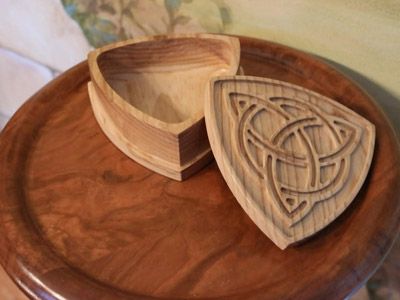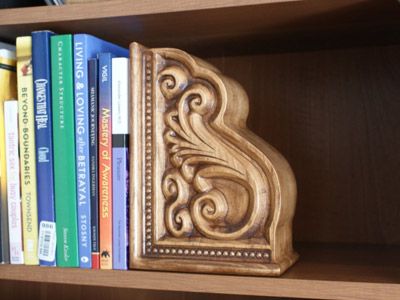
In this month's case study we had the pleasure of talking to the father and son team Marty and Andy Hartman, also known as Locust Lane Woodworking. By fusing Andy's engineering skills with his father's knowledge of wood they have been able to produce more creative, interesting, and personalized projects. Before we look specifically at one of their great projects, Andy explained how their father son duo evolved...
Locust Lane Workworking is made up of a father/son team, father Marty and son Andy. Marty has been a woodworker for most of his life, but about 10 years ago got the idea to get a CNC machine. He would go to woodworking shows in the Baltimore area and often Legacy was there demonstrating their equipment. Eventually he decided to take the plunge and buy one of their CNC machines. Although he has always has a lot of expertise with woodworking, he was a complete beginner with the computer, referring to himself as an Amish-man on the information highway.
A former software engineer, Andy was quite experienced with using the computer, and quick to learn new software, but lacked the skill and experience of his father with woodworking. However, the two of them made a good team, with Andy patiently helping his father get more proficient with software, and Marty supplying the expertise with all matters related to woodworking. Generally, after collaborating with Marty, Andy designs the projects in VCarve Pro, and Marty does all the cutting, gluing, sanding, and finishing. Sometimes painting is done by sister Erica, making it an affair of the whole family.
Locust Lane are in the unique position of being able to supply their own material for their projects as Andy continues to explain below.
Marty owns 7 acres of land in rural Pennsylvania that is abundant in ash, cherry, oak, walnut, and poplar. He also has a WoodMizer portable sawmill and a kiln for drying wood. He will cut trees that are dead or dying or at the end of their lifespan, saw the logs into lumber, kiln-dry it, and use the wood for projects on the CNC. It often goes from tree to finished project without leaving the lot. We have a Legacy Arty 36 CNC Machine, and use predominately VCarve Pro, but occasionally use some software from Legacy called Conversational CAM. To help keep us organized, Marty built a holder for all the router bits that makes them easily accessible. We affectionately refer to it as the "Bit Bunker" (see right).
From growing the business to sourcing material, Marty and Andy have a very organic way of working, which allows them to keep every part of their work 'in-house'. By posting on the Vectric User Forum (username 'llwood') we regularly see what they have been working on. At the base of the page you can see images of some more examples of their excellent work. Before that though we took the opportunity to ask them about a particular project that caught our eye, a Butterfly Box with a wooden hinge, they went onto explain...
As Andy was going through his garage, he came across a metal box (that belonged to his in-laws) that provided the inspiration. I figured there was no reason why this couldn't be done in wood.
Meanwhile, a guy named Glenn (username Glenninvb) posted a Dresser Box design on the Vectric Forum VCarve Pro Gallery that used a wooden hinge. This wooden hinge was cut with a 1/8 end mill, and Glenn posted the files for his hinge design. Glenn's hinge connected 2 pieces of wood, but I figured there was no reason that it couldn't be modified to connect three pieces, a base and two movable lids. This would allow each lid to be opened independently or both together like actual butterfly wings.
I originally thought to have the hinge attachments on the top of the wings, but Marty had envisioned a hinge design that hid the attachments altogether so that only the round spine of the hinge showed. This worked perfect for the butterfly, because the round spine of the hinge looks like the body of the butterfly. Marty found that it works better to place a piece of cardboard under the wings when gluing on the hinge pieces. Otherwise, it fits too tightly.
Andy found a good picture of a monarch butterfly on the internet and traced it as the pattern to vcarve on the top of the wings. The parts of VCarve Pro we found most useful in this design were the ability to trace bitmaps and smooth vectors, offset, and the vcarve toolpath.
We would like to thank Andy and Marty for taking the time out of their busy schedule to write this article. Register on the Vectric User Forum to view more inspiring projects from the Locust Lane Woodworking Workshop. Such as the ones you can see in the four images below. Significantly these were all created with VCarve Pro and are made using only 2D and 2.5D toolpaths not 3D models!




Vectric Ltd
Precision House
2 Arden Road
Alcester
B49 6HN
GB115123072
Privacy Policy |
Terms and Conditions